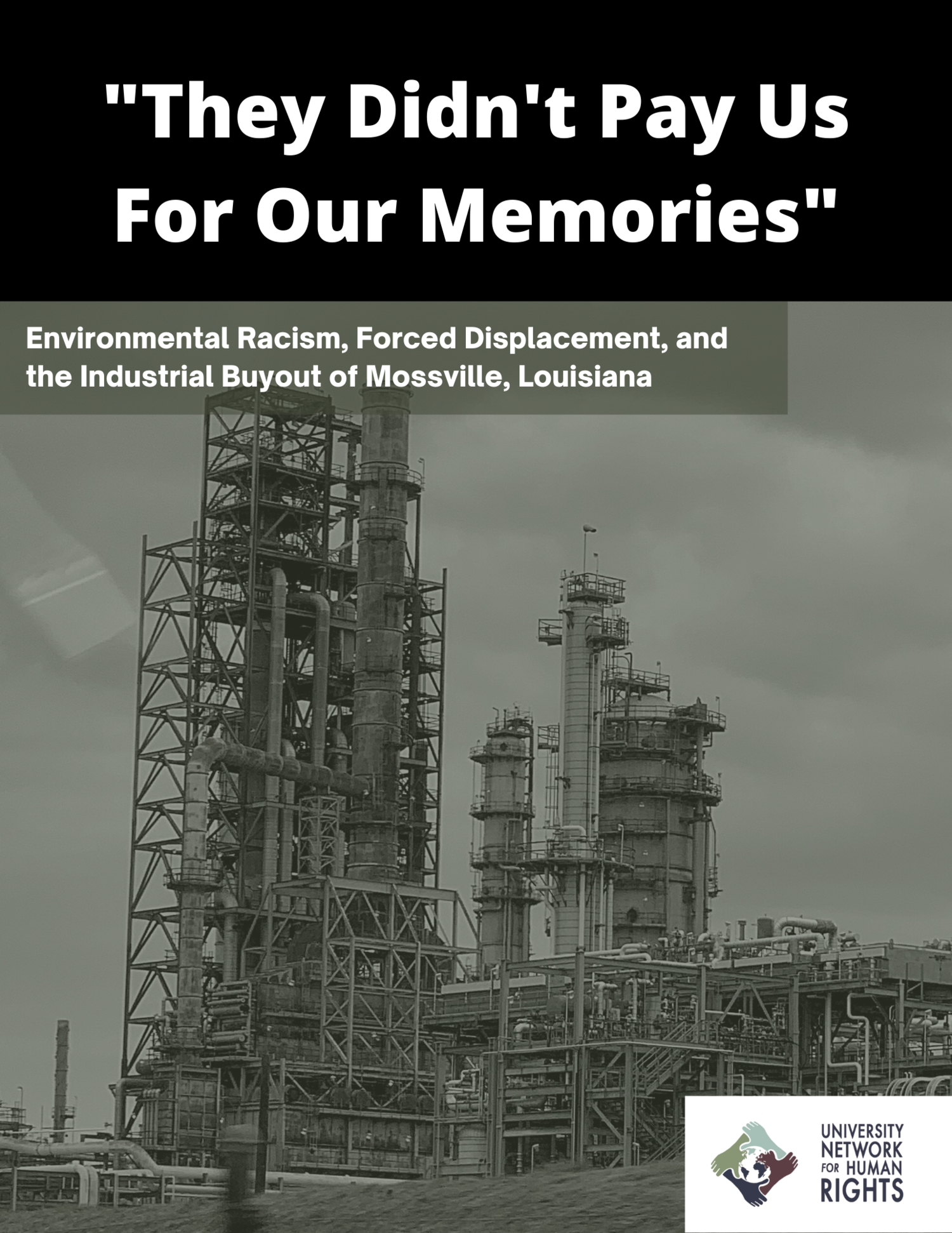They Didn’t Pay Us for Our Memories: Environmental Racism, Forced Displacement, and the Industrial Buyout of Mossville, Louisiana
Executive Summary
Founded in 1790 by formerly enslaved people and their families, the community of Mossville, Louisiana is one of the earliest pre-Civil War settlements of free Black people in the South. Since the 1940s, at least fourteen industrial facilities—including the South African chemical company Sasol—have steadily encroached on the community’s historic boundaries.
In December 2012, Sasol announced plans to expand its Louisiana complex with the addition of two new facilities—an ethylene cracker and a gas-to-liquid plant. Sasol began approaching property owners whose property was considered essential for the planned expansion. The company engaged in one-on-one negotiations with these property owners, who were predominantly white, to acquire their properties. In July 2013, Sasol announced the launch of its Voluntary Property Purchase Program (VPPP), a buyout scheme through which residents of two areas—Mossville, which was 90% Black, and Brentwood, which was 90% white—could sell their properties to the company through a fixed and formulaic process that did not allow for negotiations of property sale values.
Over the next few years, most Mossville residents participated in the VPPP and relocated. Touting its buyout program as “the most generous in history,” Sasol has developed a sophisticated messaging campaign and largely controlled the narrative about the industrial buyout of Mossville. According to a local elected official at the time, “if you were to write a handbook about how to do what is right in a community or for a community, Sasol has written that handbook.”
This report by the University Network for Human Rights is the result of a two-year investigation of the Sasol buyout of Mossville. We sought to understand and document (1) how Mossville residents experienced the VPPP; (2) the potential role of race in determining relative buyout offers for Mossville residents and residents of predominantly white areas; (3) whether the Sasol buyout of Mossville conformed with international guidelines and best practices for industrial buyouts; and (4) whether the Sasol buyout was, indeed, “the most generous in history” and how it compares with other industrial buyouts.
First, through qualitative analysis of in-depth, semi-structured interviews with former Mossville residents from 32 households who participated in the VPPP and relocated, we found that (1) interviewees from 22 households experienced the VPPP as forced displacement; (2) interviewees from 22 households were unsatisfied with the amount of financial compensation they received, and for a number of these interviewees, compensation was insufficient for relocation to a home of similar quality; and (3) interviewees from 20 households experienced emotional and psychological distress as a result of the VPPP, and this distress was often rooted in feelings of profound loss and injustice. As one interviewee said, “They didn’t pay us for our memories.”
Second, through quantitative analysis of all sales of residential property to Sasol during the buyout period, we found that (1) outside the VPPP area—that is, in the predominantly white areas where property owners were able to negotiate their sale prices—property transaction amounts were, on average, about 82% higher than those in Mossville; (2) in Brentwood—that is, the 90% white area that was part of the VPPP along with Mossville—property transaction amounts were, on average, about 88% higher than those in Mossville; and (3) there was no statistically significant difference between average property transaction amounts in Brentwood and outside the VPPP area. When considered alongside social science literature on the contemporary housing appraisal system, these data strongly suggest that the VPPP was racially discriminatory. Moreover, we conclude that the VPPP’s use of appraisals based on comparable properties (the “comps-based” approach) may have resulted in buyout offers that did not reflect the true value of homes in Mossville.
Third, we found that Sasol failed to adhere to international norms, standards, and best practices for industrial buyouts, which include (1) community consultation; (2) individual negotiation and compensation at full replacement cost; (3) an option for community resettlement; (4) livelihood restoration and improvement; (5) a right to project benefits; and (6) respect for marginalized groups.
Fourth, we found that, far from being “the most generous buyout in history,” Sasol’s buyout was on par with other industrial buyouts in Louisiana and less generous than some buyouts in other parts of the United States and around the world.

